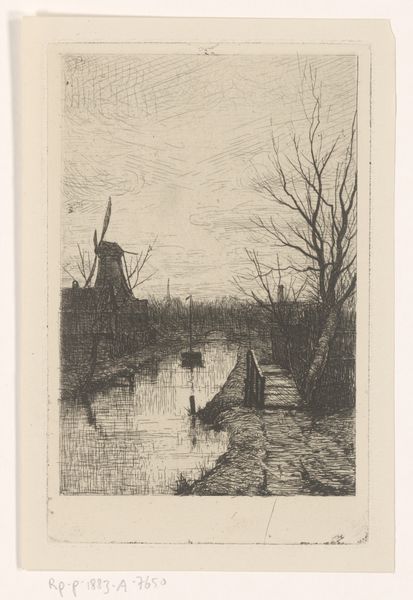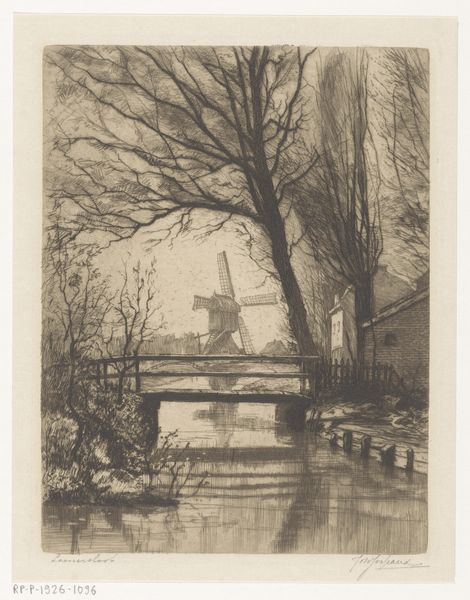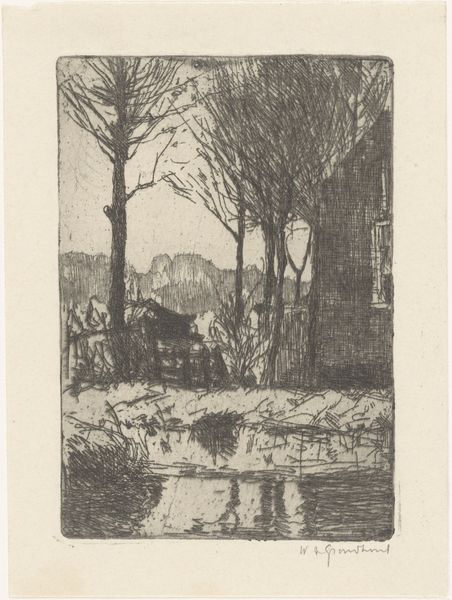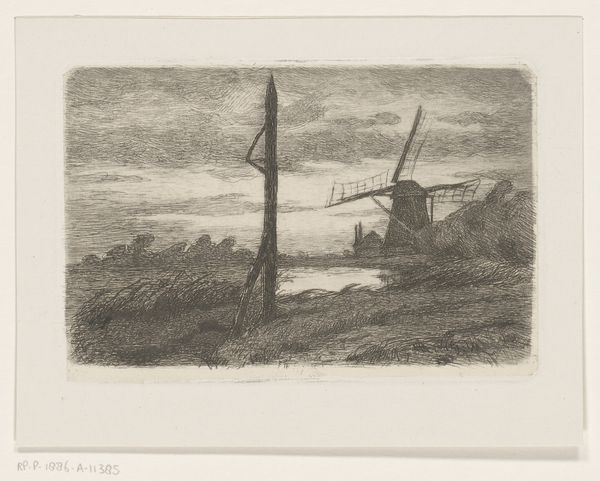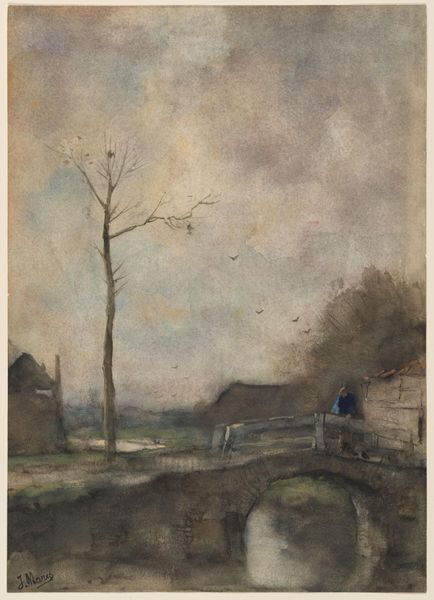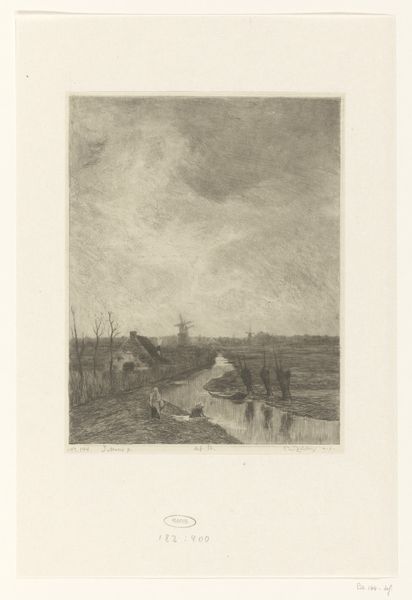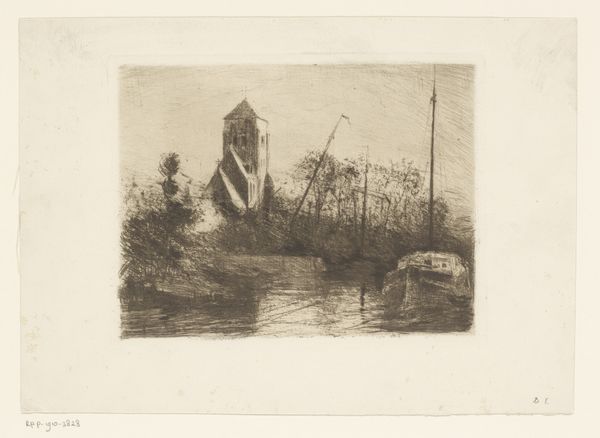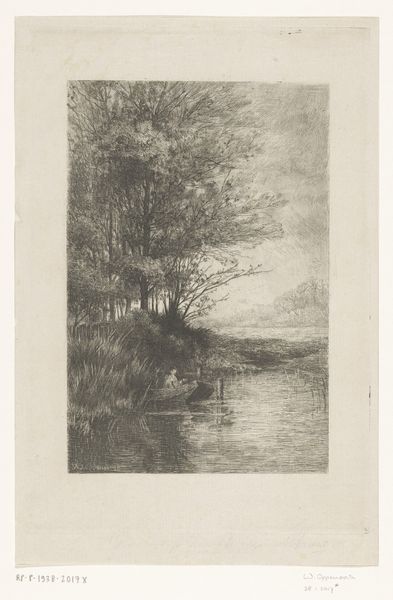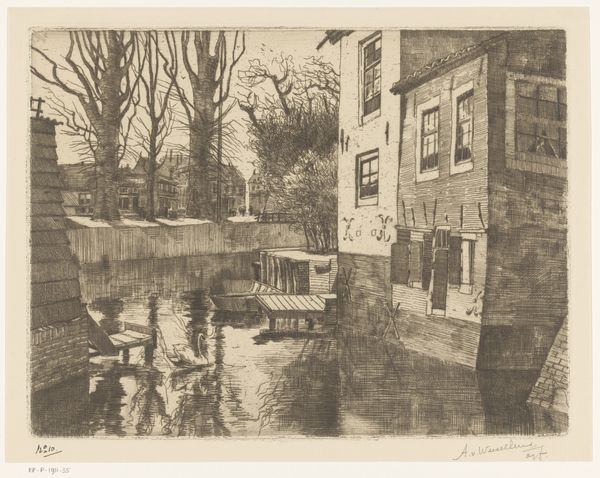
painting, watercolor
#
painting
#
impressionism
#
landscape
#
watercolor
#
cityscape
#
watercolour illustration
#
watercolor
Dimensions: height 316 mm, width 222 mm
Copyright: Rijks Museum: Open Domain
Curator: Jan Veth's watercolor from 1887, "Molens aan een vaart"—"Mills on a Canal"—captures a quiet, misty scene. Editor: Mmm, feels like a hushed secret. The watercolor gives it this wonderful ghostly quality, like a memory barely clinging to the surface. Curator: Indeed. Veth uses the watercolor medium so well here, to emphasize the industrialization of the Dutch landscape while hinting at its past. Watercolors like this were easily portable; think of the quick studies he could make as he traveled along. Editor: Oh, absolutely! I imagine him sketching from a train window, capturing the light dancing on the water, the shapes of the windmills against the hazy sky... the repetition of mills also indicates industrial life taking hold! I wonder what the local populations working in and around those mills were thinking, seeing this modernization? Curator: That’s interesting to consider! The materiality suggests the process might also embody an understanding of the socioeconomic implications that this scenery represents: a potential transition away from older industries. Editor: Fascinating. Look how the blurred lines around the trees mimic the reflections in the water. There's an almost melancholic air, isn’t there? A wistful appreciation for something in the process of disappearing. The colors themselves-- the muted grays, browns, with tiny spots of brighter pigments are like fragments. Curator: Precisely. Veth, although considered among his contemporaries like a man of great, progressive insight, was an interesting figure, interested in this quiet beauty amidst the changing world. And yet, at a larger scope, the mills here might only offer commentary on human power over environment: new technologies being forged. Editor: So much implied narrative! A small window into Dutch society, but also perhaps Jan Veth’s relationship with his transforming country. Curator: It feels like a whispered invitation to reflect upon industry's transformation of our relationship with time itself. Editor: Well put! For me, I leave it seeing something simple but striking; like the ghost of an old folktale about windmills clinging to our awareness.
Comments
No comments
Be the first to comment and join the conversation on the ultimate creative platform.

